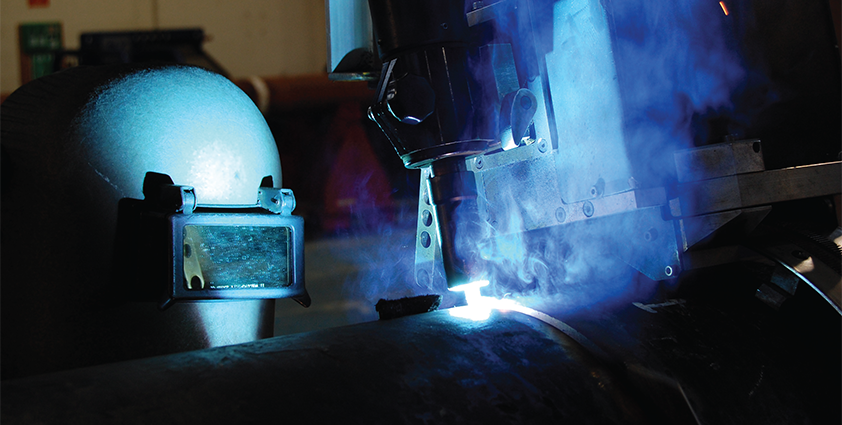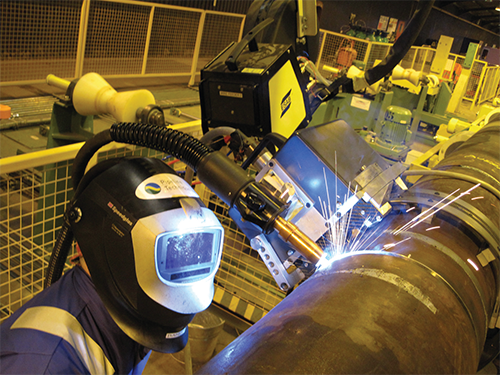
Subsea Engineering Excellence: The Success Story of Pipeline Technique
All in the technique
Pipeline Technique is an international group of companies specialising in the construction of subsea oil and gas pipelines in increasingly deep waters.
Having commenced operations in 1999 as a welding specialist, today the group also delivers project management, engineering, welding, testing and coating services for the offshore installation of J-lay, S-lay and Reel-lay pipeline projects. Given the increasingly difficult task of recovering energy resources to meet the ever-growing demand, Pipeline Technique’s in-depth understanding of both the technical and commercial issues has made them an expert in providing onshore and offshore solutions. This includes the niche area of automatic pipeline welding, which remains a critical activity for the business due to the increasing demands placed on the quality of welds. Over the years Pipeline Technique has developed welding procedures and carried out welding services on some of the largest, deepest and most technically demanding pipeline systems ever installed.
Although over the last few years Pipeline Technique’s focus has been on Western Europe, West Africa and the Gulf of Mexico, it is not limited to any particular geographical markets due to its offices in Aberdeen, Houston and Kuala Lumpur. Lars Brunt, business development, explains how Pipeline Technique’s modular production facilities further aids the business to operate in any market: “This concept enables us to ship out a complete containerised facility with all of the equipment required, to a project site. This allows us to work with low mobilisation costs due to the short set-up time and provides us with the flexibility to work in more remote locations with less difficulty than our competitors. Our client base consists of a number of leading contractors, including frame agreements with Subsea 7 and Heerema Marine Contractors, and a track record that includes projects for Acergy, Technip, Helix ESG, Bredero Shaw, and Cameron.”
Certainly Pipeline Technique’s impressive track record is reflected in the results of its fatigue tests last year. Earlier in 2010 Pipeline Technique invested in two fatigue test rigs, which simulate ocean movement and the strain that the pipeline welds are expected to endure. This is used to test the fatigue sensitivity of the materials, which can take several weeks as clients insist on a certain number of movements. Once the weld had exceeded this number, Pipeline Technique continued to run the test in order to establish the actual strength of the weld. However, when a defect was finally detected, it was in the pipe material itself instead of the weld. It is this kind of material integrity that has been one of the contributing factors in the company’s success, as Lars highlights: “We understand every aspect of pipeline fabrication and subsequently are able to offer fully integrated solutions from the engineering phase through  to the end product. Our experienced workforce operates on a project specific basis where we can tailor the set up of equipment and firing lines to meet clients’ individual needs. In order to fully support these activities we have invested in a brand new 1350 sq m facility, where we will carry out procedure development, research and development, fabrication and testing work, and training of personnel.”
to the end product. Our experienced workforce operates on a project specific basis where we can tailor the set up of equipment and firing lines to meet clients’ individual needs. In order to fully support these activities we have invested in a brand new 1350 sq m facility, where we will carry out procedure development, research and development, fabrication and testing work, and training of personnel.”
Even more than the fabrication of flow and export lines, steel cantenary risers have the most stringent welding criteria, making it a very difficult specialism that few companies in the world engage in. Pipeline Technique has achieved several industry firsts in this challenging sector, including the fabrication of the world’s largest onshore and offshore steel cantenary risers. Meeting the rigorous automated ultrasonic testing (AUT) criteria, which has the ability to detect weld defects of less than one mm in size, these risers reach an outside diameter of 24 inches with a 1.575 inch (40 mm) wall thickness. These dimensions have enabled the risers to be utilised in 7000 ft (2133 m) water depths on the BP Atlantis, Mardi Gras and Thunder Horse projects in the Gulf of Mexico.
Most recently Pipeline Technique has undertaken work on a deepwater development project for BP offshore Angola. Operating from the newly built Porto Amboim Multi-Jointing facility, Pipeline Technique welded over 7800 12 m pipe sections together to form 24 m sections, and then welded over 1600 J-lay collars on to these sections. The 24 m sections were then transported out to Heerema’s deepwater construction vessel Balder to be welded together into service and production flow lines. The J-lay collars enable the Balder to clamp onto and support the weight of the flow line as it is being installed. Taking 175,000 man-hours and 5500 welds, the work was completed without a single lost day of production.
As the trend for deep water drilling continues to push the industry’s capabilities further, Lars explains how innovation is key to remaining ahead of the market: “Our engineers and innovation department are involved in several programmes with the innovation teams of our clients and suppliers to improve equipment, fabrication processes, and the quality of the final product. Using our simple and smart HALO automatic welding system, we can provide solutions for the ever-growing pipeline diameters and pipe lengths. During our latest project, the HALO system has proved its quality by reliability and repeatability. The single torch welding system is easy to operate and maintain, performing high productivity and quality welds, and will soon be complemented by a dual torch system.”
With the oil and gas industry still dealing with the aftermath of the global recession, this ability to innovate is a major aspect of Pipeline Technique’s growth strategy. Having already pinpointed opportunities in the market, Lars highlights how Pipeline Technique utilises its resources to remain at the industry forefront: “Although 2011 is not expected to be as busy as previous years, there is still a lot of growth within the industry. In fact, in some regions oil and gas field developments are only now starting to flourish. We have identified South-East Asia and Australia as major emerging markets, with a number of substantial projects ongoing and in the pipeline. The challenging conditions of several of these projects mean that the use of corrosion resistant alloys (CRA) is necessary in order to achieve the demanded life spans. Having anticipated this demand we have developed and tested several CRA clad pipes to ensure that we are ahead of the competition. The global demand for oil is as large as ever, and it is our job to overcome the challenges that this demand brings with it, in line with our target to be recognised as the best pipeline and riser construction company in the world.”
Pipeline Technique Ltd
Services: Pipeline and riser construction